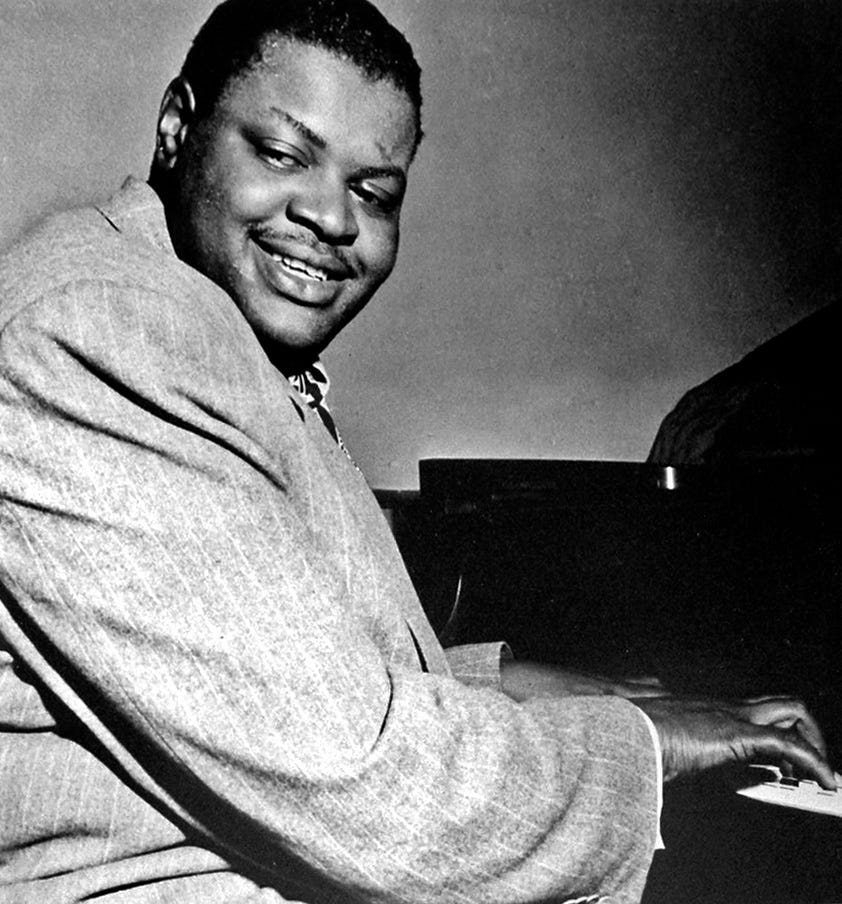Hey Jazzsters,
Today I’m serving up pure swing on a plate.
I defy you to listen to today’s track and not feel just a little bit better about the s***show that has (and continues to be) 2020.
You’re gonna love this…
Today’s track:
Artist: Oscar Peterson
Album: Night Train
Year: 1963
Olly’s Take
I grew up playing classical piano.
Every week, from the age of six, my mum would drive me to lessons in the next village with Mrs Thompson, who would drill me on my scales and arpeggios for the next 10 years.
I was a good student.
Until one day, I borrowed a cassette tape from the local library (those were the days) of blues piano.
From that moment on, it was basically sayonara classical music.
Hearing blues piano was a complete revelation for me. The bluesy 7th chords, the bass and drums, and the swing…
Oh man, the swing…
And needless to say Mrs Thompson wasn’t best pleased when I turned up to my lesson the following week and started asking her why Mozart didn’t compose with the blues scale.
Hearing that tape was quite literally a life-changing moment for me.
And the guy on the tape was Oscar Peterson.
Who am I listening to?
Oscar Peterson was an iconic pianist, who had an expansive career from the 1940s onwards.
Oscar is one of the greats - a genuine powerhouse on the piano, who often performed with a trio (like today’s track.)
He’s known for his hard-swinging, heavily blues-influenced music.
What’s the music?
This is a classic blues track.
Jazz musicians love the blues because it’s a really simple 12-bar format that repeats over and over and gives lots of freedom for improvising.
(You can tell what key it’s in from the title: C Jam Blues.)
Here, Oscar is playing with his piano trio:
piano
double bass
drums
3 things to listen for
Hard swing
There’s really only one point to recording a blues in a studio album:
To swing as hard as possible.
These guys don’t dress it up at all. There’s no funny business. This is pure, hard-swinging blues.
So just sit back and enjoy the feel (the swing) of the music to your heart’s content.
Foot tapping is mandatory.
Breaks
This arrangement features a lot of breaks - where the drums and bass stop playing entirely for a few bars.
During the silence, the piano carries on by itself:
00:34
00:51
01:10
01:25
During these piano breaks, listen how the piano is able to continue the momentum all by itself.
This is not easy to do.
Tension and Release
From 2:06-2:30, you’ll hear Oscar playing strong rhythmic motif over and over, which the bass and drums also catch.
This repetition creates a lot of tension, which is released at 2:30, when the improvising continues.
(Tension and release is one of the key musical techniques that makes jazz what it is.)
Bonus - Big Band Piano
As you listen to Oscar’s playing, imagine you’re listening to a big band - with a big, loud horn section (trumpets, trombones, etc).
He was heavily influenced by the big bands of the 1930s and 40s, and his playing is so powerful that he’s able to encapsulate the power of a big band on the keys of the piano.
Powerful stuff.
Share the music!
That’s all for today.
Please email me back and let me know which bits of the post you find most useful, so I know what to do more of!
And, lastly, if you know someone who would appreciate this, please share this newsletter with them using the button below…
Until tomorrow,
Olly Richards
P.S.
Some housekeeping…
Please “enable images” if you haven’t already. I send great images with every post
If you want to browse previous posts, you can click through to the website and scroll to your heart’s content!




